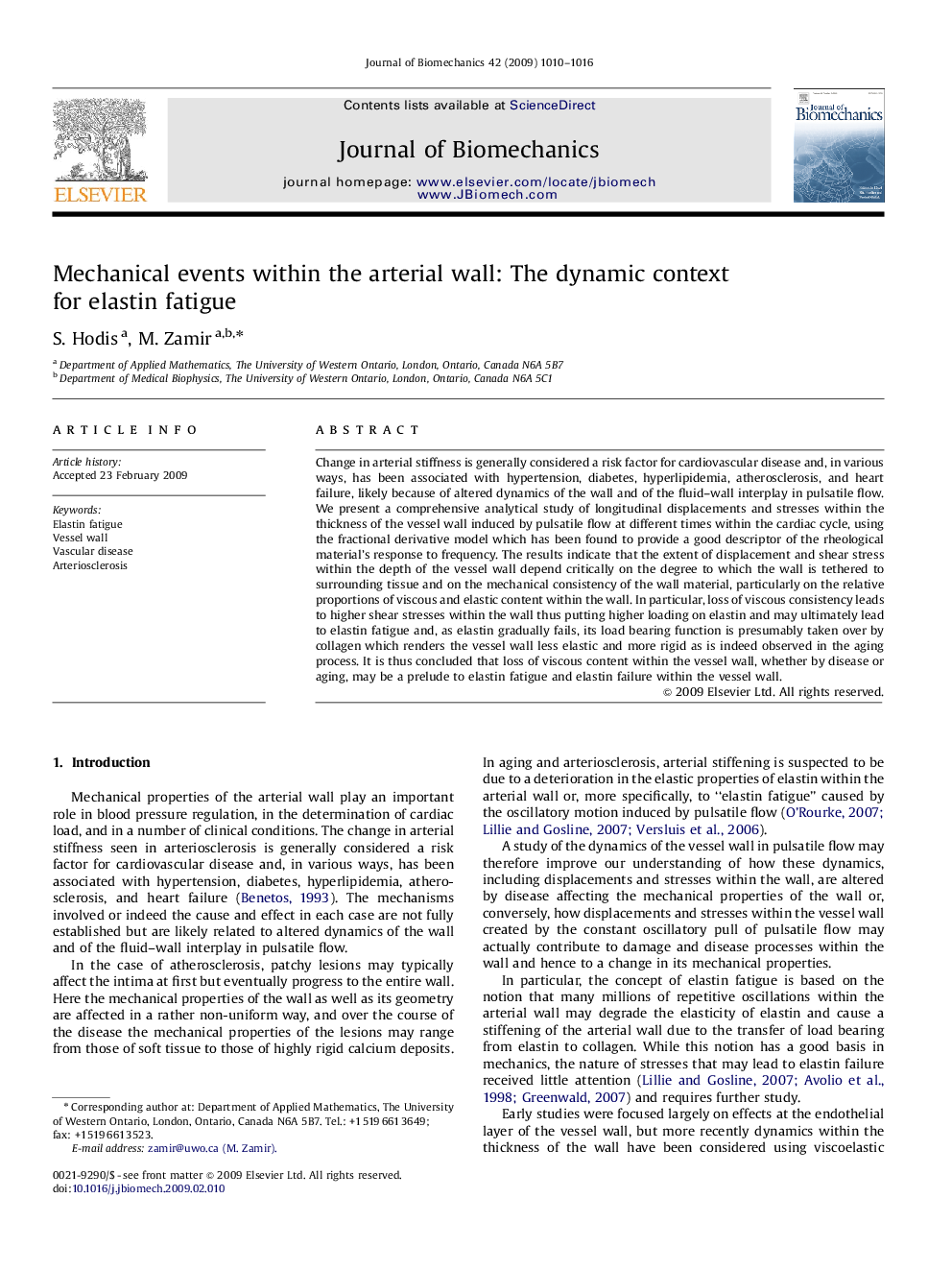| Article ID | Journal | Published Year | Pages | File Type |
|---|---|---|---|---|
| 872691 | Journal of Biomechanics | 2009 | 7 Pages |
Change in arterial stiffness is generally considered a risk factor for cardiovascular disease and, in various ways, has been associated with hypertension, diabetes, hyperlipidemia, atherosclerosis, and heart failure, likely because of altered dynamics of the wall and of the fluid–wall interplay in pulsatile flow. We present a comprehensive analytical study of longitudinal displacements and stresses within the thickness of the vessel wall induced by pulsatile flow at different times within the cardiac cycle, using the fractional derivative model which has been found to provide a good descriptor of the rheological material's response to frequency. The results indicate that the extent of displacement and shear stress within the depth of the vessel wall depend critically on the degree to which the wall is tethered to surrounding tissue and on the mechanical consistency of the wall material, particularly on the relative proportions of viscous and elastic content within the wall. In particular, loss of viscous consistency leads to higher shear stresses within the wall thus putting higher loading on elastin and may ultimately lead to elastin fatigue and, as elastin gradually fails, its load bearing function is presumably taken over by collagen which renders the vessel wall less elastic and more rigid as is indeed observed in the aging process. It is thus concluded that loss of viscous content within the vessel wall, whether by disease or aging, may be a prelude to elastin fatigue and elastin failure within the vessel wall.
